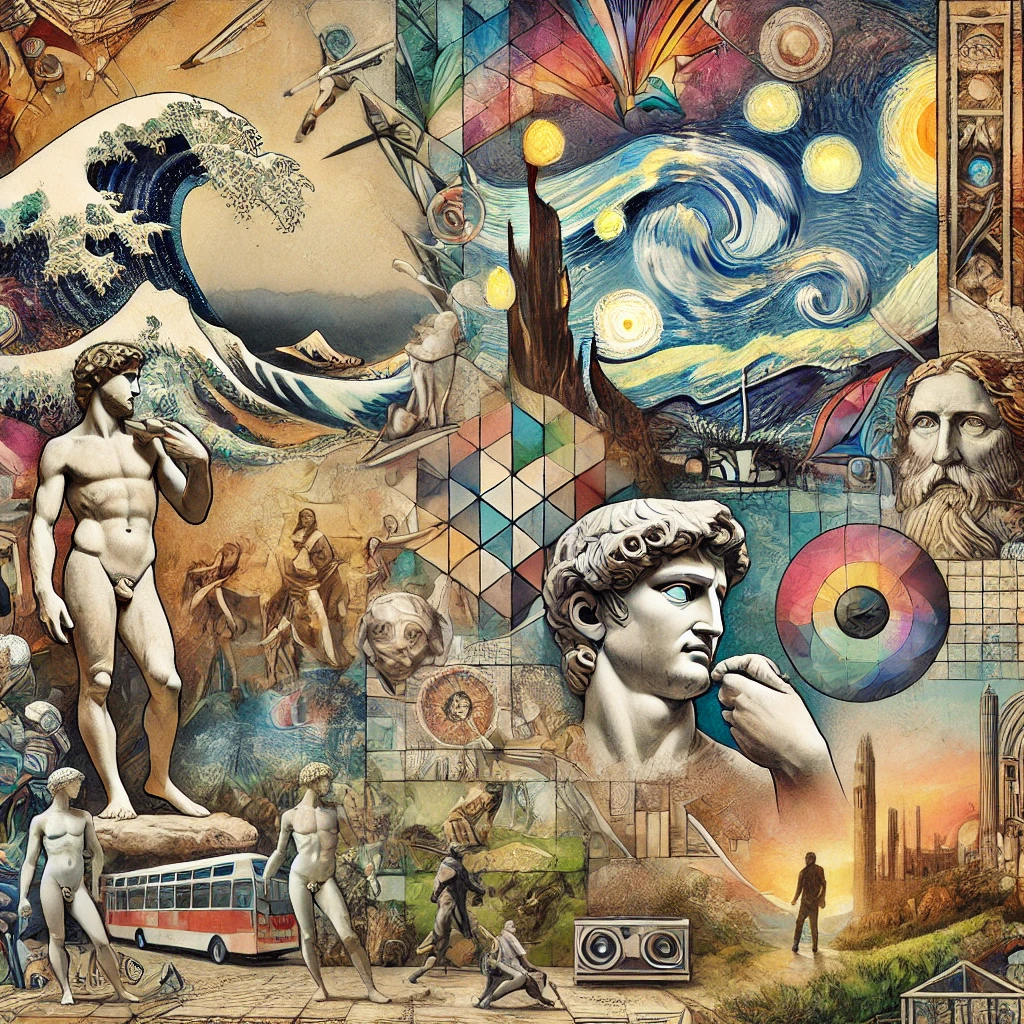Art has been a cornerstone of human civilization for millennia, acting as a mirror that reflects not just the world we live in but also the complexities of human emotions and experiences. From the early cave paintings of Lascaux to the intricate sculptures of ancient Greece, art has continuously evolved, telling the story of humanity in ways words alone could never fully express.
#### **A Universal Language**
Art transcends language barriers and cultural differences. A painting, sculpture, or piece of music can communicate emotions, ideas, and narratives without uttering a single word. It is one of the few mediums through which humans can connect on a profoundly universal level. Whether it's the melancholic brushstrokes of Van Gogh’s "Starry Night" or the serene beauty of Michelangelo’s "David," art speaks to our shared human experience—grief, joy, love, and awe.
In this sense, art becomes more than just a form of self-expression; it is a dialogue. Artists convey their inner world, and viewers interpret these messages through their unique perspectives. No two people view a piece of art the same way, which is one of its most enchanting qualities.
#### **The Role of Art in Society**
Historically, art has often been a reflection of the society in which it was created. During the Renaissance, artists like Leonardo da Vinci and Raphael explored humanism, symmetry, and a return to classical ideas. The works of this period emphasized the power and beauty of the human form, a sentiment reflective of the cultural revival of ancient Greek and Roman philosophies.
Fast forward to the 20th century, when movements like Dadaism and Surrealism emerged in response to the chaos and devastation of World War I. These artistic movements challenged the very definition of art, questioning societal norms and rebelling against the established order. Similarly, the Harlem Renaissance gave voice to African American artists, who used literature, music, and visual arts to challenge the racial prejudices of their time.
Art has always been political, a powerful tool for advocacy and change. In our modern world, street artists like Banksy use urban landscapes to comment on consumerism, war, and social injustice. Art forces us to confront uncomfortable truths about our world while offering the possibility of a different vision for the future.
#### **Art as Therapy**
In addition to its societal impact, art also plays a deeply personal role in individual well-being. The act of creating or engaging with art has been shown to improve mental health, providing an outlet for self-expression, emotional release, and mindfulness. Art therapy, for instance, has become a recognized form of treatment for people coping with trauma, depression, and anxiety. The tactile process of creating—whether through painting, sculpting, or drawing—can provide a sense of control and purpose, grounding individuals in the present moment.
Even for those who are not professional artists, the simple act of doodling, coloring, or visiting an art gallery can have calming effects, offering a brief escape from the stresses of everyday life. Art allows us to explore our inner thoughts and emotions in a non-verbal way, promoting self-discovery and healing.
#### **The Future of Art**
As technology continues to evolve, so too does the landscape of art. Digital art, virtual reality (VR), and artificial intelligence (AI) are expanding the boundaries of creativity, allowing artists to experiment in ways previously unimaginable. The rise of NFTs (Non-Fungible Tokens) has opened up new avenues for artists to monetize their work, changing the way art is valued and collected.
Despite these advancements, the essence of art remains unchanged—it is an exploration of the human experience. Whether using a brush, a camera, or a computer, artists will continue to create work that resonates with people on a deeply emotional and intellectual level.
Art, in all its forms, continues to remind us of our shared humanity, acting as both a mirror and a window. A mirror to reflect who we are and a window to what we can become.
#### **Conclusion**
Art is not just a reflection of culture; it is a force that shapes it. It helps us navigate the world, understand each other, and make sense of our own internal landscapes. From the murals on city walls to the masterpieces in museums, art invites us to pause, observe, and feel. In a world that is often fast-paced and fragmented, art offers a moment of stillness—a chance to reconnect with ourselves and others, reminding us of the beauty, complexity, and diversity of the human spirit.

